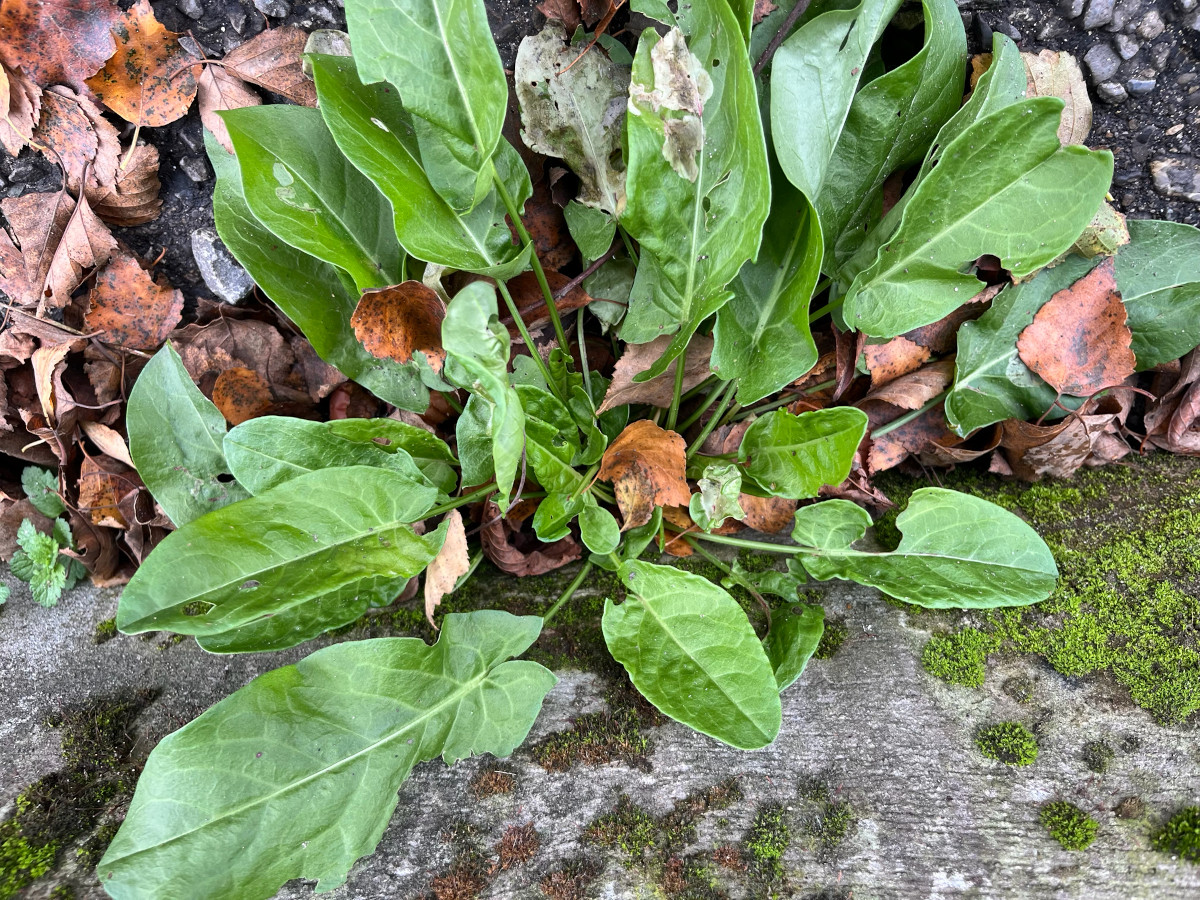Rumex acetosa L. - syn. Acetosa pratensis Mill. - Polygonaceae
common sorrel, garden sorrel, spinach dock, narrow-leaved dock, Sauerampfer, Wiesen-Sauerampfer
Perennial herb, up to 60cm high, native to Europe, Asia, Northern Africa, naturalized in America, cultivated as garden herb or leaf vegetable; stem erect, red at the base; leaves oblong-sagittate, long-petioled; flowers green-red; fruit red.
„Common sorrel is a vegetable crop consumed for its characteristic pleasant acidic taste originating from free oxalic acidic and its soluble potassium and sodium salts. Its wild form differs exceptionally little from its cultivated form and is as willingly used in the kitchen as the latter… Sorrel roots accumulated the largest amounts [of metals like Zinc, Copper, Manganese, Iron, Chromium, Nikel, Lead, Cadmium], on average 27.0 mg·kg-1
f.m of the analyzed metals, whereas lower leaves, inflorescences and upper leaves placed next… The intensity of metal accumulation by sorrel plants differed considerably depending on locality… Considerable ability of common sorrel for metal accumulation, particularly lead and cadmium, recommends great caution while consuming this vegetable.“
[Heavy metal content in common sorrel plants (Rumex Acetosa L.) obtained from natural sites in Małopolska province., Gawęda, M., Polish. J. Environ. Stud, 18(2), 2009, 213-218] http://6csnfn.pjoes.com/pdf/18.2/213-218.pdf
Tannin content (% of dry weight) obtained from Rumex acetosa were: roots (14.5%), leaves (8.3%), and fruits (6.8%).
[Antiradical properties of extracts from roots, leaves and fruits of six Rumex L. species., Wegiera, M., Grabarczyk, P., Baraniak, B., Smolarz, H., Acta Biologica Cracoviensia Series Botanica, 53(1), 2011, 125-131] http://www.degruyter.com/downloadpdf/j/abcsb.2011.53.issue-1/v10182-011-0018-z/v10182-011-0018-z.xml
„It is a traditional ingredient in salad or soup due to its vitamin C content. Additionally, preparations of Rumex species were used for constipation or for treatment of chronic skin diseases. This claimed therapeutic use and the close relationship to rhubarb (Rheum officinale) indicate a high content of tannins, especially proanthocyanidins. In the literature, the amount of tannins found in different related Rumex species varies from about 2 to 15%… Different proanthocyanidins, a polymer fraction and the new phenolglycoside 1-O-β-D – (2,4-Dihydroxy-6-methoxyphenyl)-6-O-(4-hydroxy-3,5-dimethoxybenzoyl)-glucopyranoside were obtained. The isolated proanthocyanidin fractions contain mono-, di-, tri-, and tetramers consisting of catechin, epicatechin and epiafzelechin as flavan-3-ol components. A- and B-type interflavan-linkage was found as well as substitution with gallic acid.“
[Proanthocyanidins and phenolglycosides from Rumex acetosa L., Anke, J., Petereit, F., Hensel, A., Planta Medica, 72(11), 2006, 39]

Rumex acetosa, Bremgarten, Switzerland (2025) © Bora Çelen CC BY-SA 4.0 inaturalist.org

Lindman, C.A.M., Bilder ur Nordens Flora, vol.2 t.359 (1922-1926)
http://plantgenera.org/species.php?id_species=893742
